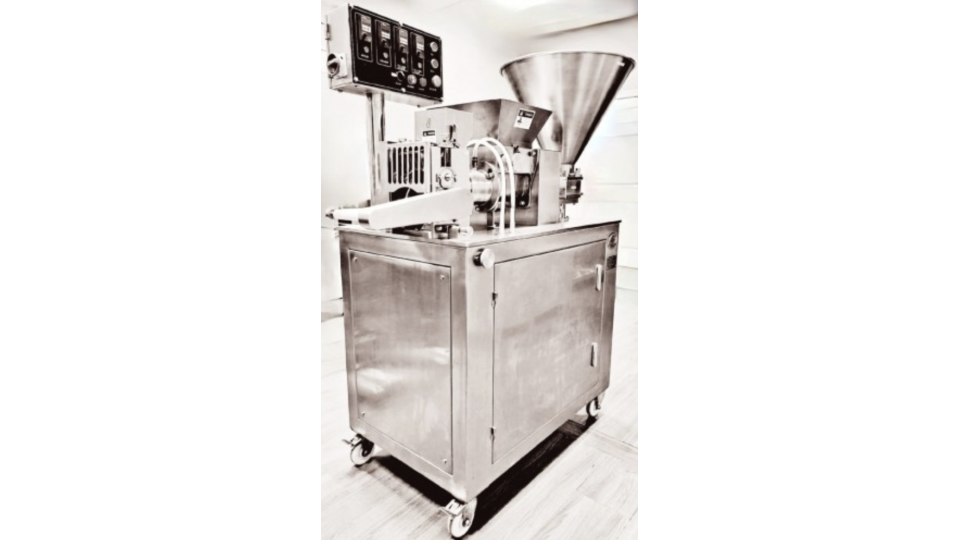Samosas are a beloved snack enjoyed by people all over the world. These crispy, savory pastries are filled with a variety of ingredients, ranging from spiced potatoes and peas to minced meat. Traditionally, samosas are made by hand, which can be a time-consuming and labor-intensive process. However, with the advent of samosa making machines, producing these delicious treats has become much easier and more efficient. In this guide, we'll take you through everything you need to know about samosa making machines, including their benefits, how they work, and some of the best options available on the market today.
What Are Samosa Making Machines?
Samosa making machines are automated or semi-automated devices designed to simplify the process of making samosas. These machines handle various steps of the samosa-making process, including dough preparation, filling, shaping, and even frying in some models. By automating these tasks, samosa making machines can significantly increase production efficiency and consistency, making them an excellent investment for businesses and home cooks alike.
Benefits of Using Samosa Making Machines
- Time Efficiency: One of the most significant advantages of using a samosa making machine is the amount of time saved. Traditional samosa making involves multiple steps, each requiring careful attention and time. A machine can streamline these processes, allowing for the production of large quantities of samosas in a fraction of the time.
- Consistency: Hand-made samosas can vary in size, shape, and filling distribution. Samosa making machines ensure that each samosa is uniform, which is particularly important for commercial production where consistency is key to customer satisfaction.
- Hygiene: Automated machines reduce the amount of human contact with the food, which can improve hygiene and reduce the risk of contamination. This is especially important in a commercial kitchen setting.
- Cost-Effective: While the initial investment in a samosa making machine can be substantial, the long-term savings in labor costs and increased production efficiency can make it a cost-effective solution for businesses.
How Do Samosa Making Machines Work?
Samosa making machines come in various designs and functionalities, but most follow a similar process:
- Dough Preparation: Some machines have built-in dough mixers, while others require pre-made dough. The dough is rolled into thin sheets, ready for filling.
- Filling: The machine injects the pre-prepared filling into the dough sheets. The filling can be anything from traditional potato and pea mixture to meat or even dessert fillings.
- Shaping and Sealing: The machine then shapes the filled dough into the characteristic triangular samosa shape and seals the edges to prevent the filling from leaking out during frying.
- Cutting: Once shaped, the samosas are cut into individual pieces.
- Frying (Optional): Some advanced samosa making machines also have built-in fryers that cook the samosas, making them ready to eat right out of the machine.
Types of Samosa Making Machines
There are several types of samosa making machines, each suited for different needs and scales of production:
- Manual Samosa Making Machines: These machines require some manual input, such as feeding the dough and filling into the machine. They are suitable for small-scale production or home use.
- Semi-Automatic Samosa Making Machines: These machines automate most of the process but still require some human intervention, such as loading the dough or removing the finished samosas. They are ideal for medium-scale production.
- Automatic Samosa Making Machines: Fully automated machines handle the entire process, from dough preparation to frying. These machines are best suited for large-scale production facilities where high output and efficiency are crucial.
How to Buy a Samosa Making Machine
Investing in a samosa making machine can significantly enhance your production process, whether you are a home cook or a business owner. Here's a step-by-step guide on how to buy a samosa making machine that best suits your needs:
Step 1: Determine Your Needs
- Production Volume: Assess how many samosas you need to produce daily or weekly. This will help you decide whether you need a manual, semi-automatic, or fully automatic machine.
- Budget: Set a budget that includes the initial purchase cost, potential maintenance expenses, and any additional accessories you might need.
- Space: Measure the space available in your kitchen or production area to ensure the machine will fit comfortably.
Step 2: Research Different Types of Machines
- Manual Machines: Best for small-scale production or home use. These machines require some manual input but are generally more affordable.
- Semi-Automatic Machines: Suitable for medium-scale production. These machines automate most of the process but still require some human intervention.
- Automatic Machines: Ideal for large-scale production. These machines handle the entire process, from dough preparation to frying, and are perfect for commercial use.
Step 3: Compare Features and Specifications
- Production Capacity: Check how many samosas the machine can produce per hour.
- Ease of Use: Look for machines with user-friendly interfaces and simple operation.
- Maintenance: Consider how easy it is to clean and maintain the machine.
- Versatility: Some machines can handle different types of fillings and dough thicknesses.
Step 4: Read Reviews and Ratings
- Look for reviews from other users to get an idea of the machine's performance, reliability, and any potential issues.
- Check ratings on reputable websites and forums to ensure you are choosing a well-regarded model.
Step 5: Contact Suppliers
- Reach out to suppliers or manufacturers to ask any specific questions you may have.
- Request a demonstration if possible, to see the machine in action and verify its capabilities.
- Compare prices from different suppliers to ensure you are getting a competitive deal.
Step 6: Check Warranty and Support
- Ensure the machine comes with a warranty to protect your investment.
- Look for suppliers that offer good customer support and after-sales service.
Step 7: Make the Purchase
- Once you have chosen the right machine, place your order through a reputable supplier or manufacturer.
- Arrange for delivery and installation if needed.
Recommended Supplier: Presto Precision Plus
For high-quality samosa making machines, consider Presto Precision Plus. They offer a range of machines to suit different production needs and budgets.
Ready to take your samosa production to the next level? Visit Presto Precision Plus today to explore our top-rated samosa making machines. Our expert team is here to help you choose the perfect machine for your needs. Order now and start producing delicious, perfectly crafted samosas with ease!
Conclusion
Samosa making machines have revolutionized the way samosas are produced, offering numerous benefits in terms of efficiency, consistency, and hygiene. Whether you are a home cook looking to make your samosa-making process easier or a business owner aiming to increase production, there is a samosa making machine to suit your needs.
Investing in a samosa making machine can be a game-changer, saving you time and labor while ensuring that each samosa is perfectly crafted. With the variety of machines available on the market today, it's important to assess your specific needs and choose the machine that best meets them. From manual models for small-scale production to fully automatic machines for large-scale operations, there's a perfect samosa making machine out there for everyone.
By understanding the different types of machines, their features, and the best options available, you can make an informed decision and take your samosa-making to the next level.


